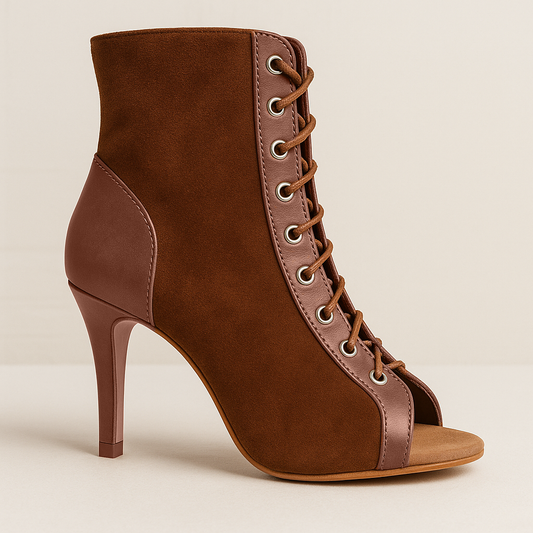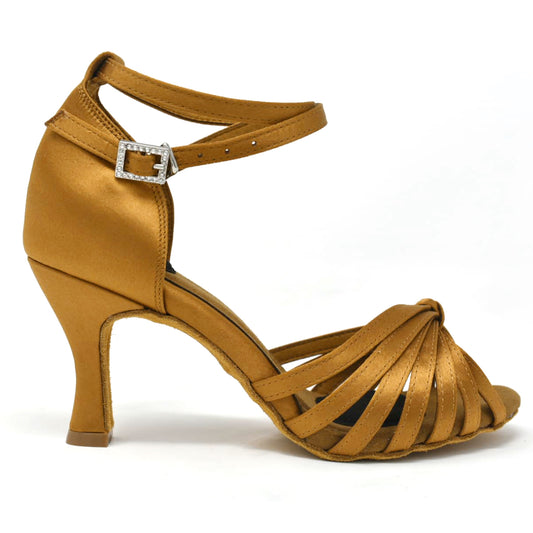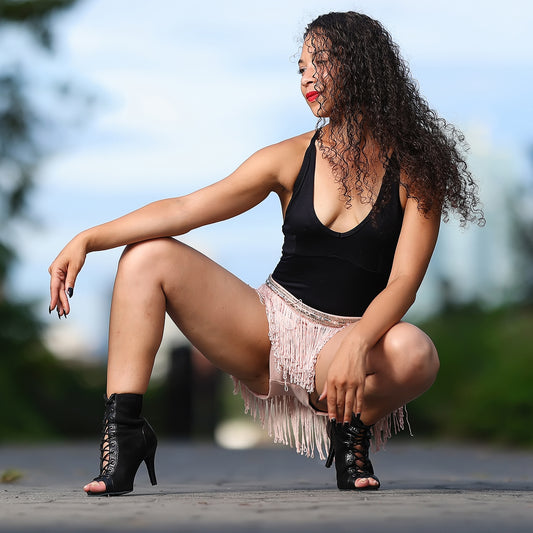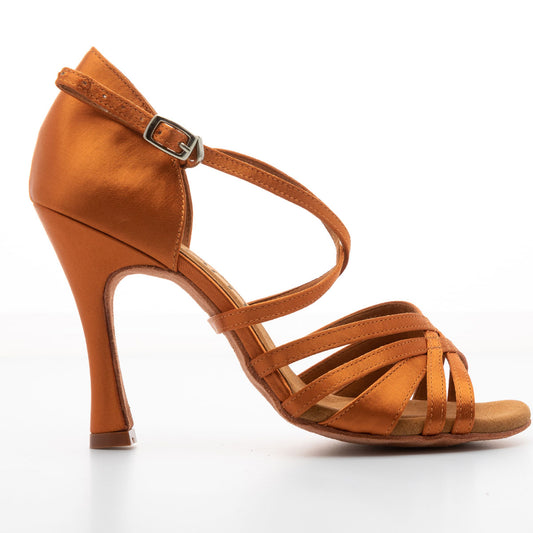
Dancers—both beginners and professionals—often face a key question: Should I train in sneakers or heels? The answer depends on the style of dance, your experience level, and your personal goals. However, whether you're learning salsa, bachata, hip-hop, or ballroom, both sneakers and heels have their place in a dancer’s journey.
Let’s break down the differences and help you determine when dance sneakers might be the better option for training and injury prevention.
How Dancing in Heels Affects Your Body
Dancing in heels fundamentally changes how your muscles engage and how your body distributes weight.
✔ Engages Inner Thighs & Core – To maintain balance in heels, dancers engage their inner thighs and core more than in flats.
✔ Increases Ankle & Shin Strain – The elevated heel shifts weight forward, requiring constant stabilization in the ankles and shins.
✔ Alters Posture & Weight Distribution – Moves executed in heels require slight body adjustments to maintain balance, sometimes leading to additional stress on the knees and lower back.
While heels can enhance posture and movement aesthetics, they place more strain on the lower body, particularly for beginners or those recovering from injuries.
Why Dance Sneakers Might Be the Better Choice
For certain training scenarios, dance sneakers can be a smarter, safer option—allowing you to build strength, avoid unnecessary strain, and focus on mastering technique. Here’s why:
1. Dance Sneakers Reduce Injury Risk
If you’re recovering from an injury, heels may not be the best option. Because heels shift your weight forward, they require extra stabilization, which can put additional strain on weakened muscles, tendons, or joints.
👟 Why Choose Sneakers?
✔ Better Weight Distribution – Keeps your weight evenly spread, reducing strain on the knees and ankles.
✔ Shock Absorption – Cushioned insoles provide support, easing impact on the joints.
✔ Injury Prevention – Helps prevent further damage while allowing controlled movement.
2. Dance Sneakers Enhance Comfort for Long Training Sessions
Dancing requires hours of practice, and the wrong footwear can lead to discomfort, blisters, and even long-term foot issues. Beginners and professionals alike should prioritize comfort when choosing their training shoes.
👟 Why Choose Sneakers?
✔ All-Day Comfort – Padded soles and supportive construction keep your feet comfortable through long rehearsals.
✔ Less Foot Fatigue – Sneakers don’t require constant micro-adjustments like heels, meaning you can train longer without discomfort.
✔ Ideal for Beginners – Allows dancers to focus on technique without the added challenge of balancing in heels.
3. Dance Sneakers Provide Superior Flexibility & Movement
A dancer’s shoe should work with their foot, not against it. Regular street shoes are designed for stability, often restricting the natural movement dancers need.
👟 Why Choose Sneakers?
✔ Flexible Soles – Dance sneakers are designed for articulation, making it easier to point, flex, and transition between movements.
✔ Freedom of Movement – Sneakers allow dancers to move in multiple directions effortlessly, without the stiffness of traditional shoes.
✔ Easier Spinning & Gliding – Unlike rubber-soled street shoes, dance sneakers are made with smooth, ergonomic outsoles, reducing friction while still providing control.
The Problem with Dancing in Street Shoes
Many dancers make the mistake of training in regular sneakers or street shoes, unaware of how much damage this can cause to their feet, knees, and overall movement. Here’s why:
❌ Too Much Grip = Joint Strain – Rubber soles are designed to stop movement, which increases torque on the knees when trying to turn.
❌ Lack of Flexibility – Most casual sneakers restrict foot articulation, limiting full-range motion.
❌ Not Built for Spins – Friction-heavy shoes can make it harder to pivot, causing unnecessary strain on the ankles.
👟 The Solution? StreetSole Dance Sneakers – designed for dancers who need a shoe that moves with them, not against them.
When Should You Wear Dance Sneakers vs. Heels?
Dancers should train in both heels and sneakers, depending on their goals. Here’s a guide:
✔ Wear Dance Sneakers When:
- Learning new techniques that require repetition and control.
- Training for long hours to avoid foot fatigue.
- Recovering from injuries or preventing knee and ankle strain.
- Practicing in street environments where heels may be unsafe.
✔ Wear Heels When:
- Preparing for performances or competitions where heels are required.
- Developing posture and elegance in certain dance styles.
- Training advanced movement control (only after building a foundation in sneakers).
Why StreetSole Dance Sneakers Are the Best Choice
Dancers need a sneaker that isn’t just comfortable—but also designed for movement, flexibility, and safety.
👟 StreetSole Dance Sneakers:
✔ Designed for Spins & Turns – Specialized outsoles reduce friction while allowing controlled movement.
✔ Lightweight & Flexible – Keeps you moving effortlessly across different dance styles.
✔ Shock Absorption – Protects knees, ankles, and feet from impact stress.
✔ Street-to-Dance Versatility – Wear them anywhere—from rehearsal to the dance floor without switching shoes.
🔗 Shop StreetSole Dance Sneakers and dance with confidence!
Final Verdict: Train Smart, Dance Strong
Choosing between heels and sneakers isn’t a question of one being better than the other—it’s about training smart.
💡 Sneakers help you build endurance, protect your joints, and improve footwork.💡 Heels refine elegance, posture, and stage presence.
Both are important—but making the right choice at the right time will help you become a stronger, more resilient dancer.
✨ Dance Smart. Train Strong. Choose the Right Shoes.







